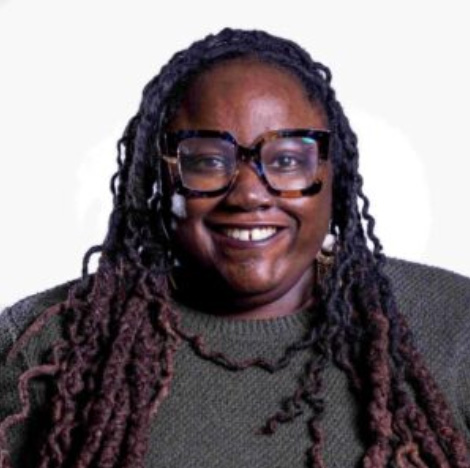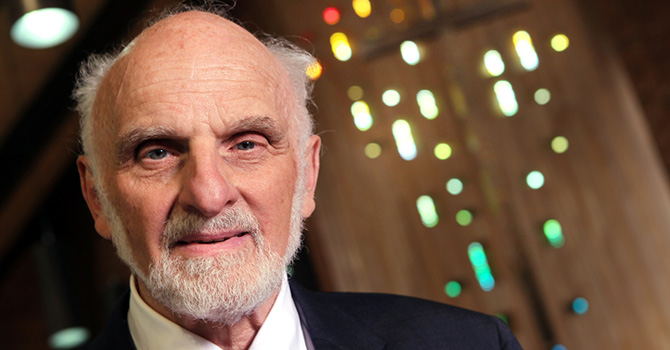I spend a good chunk of each day following my 15-month-old daughter. No one prepared me for this aspect of parenting.
She toddles and I trail along, hovering closely behind or beside or sometimes shooting ahead to clear the path in front of her. Between all her toys and the dog’s toys that I pick up or kick aside, it’s a lot like weeding the garden, a practice that’s never quite done.
When she takes off, I rush after her, trying to keep her from flying headlong into furniture. Most of the time I am successful, which I chalk up to my high school experience as a point guard on the basketball team. You have to be quick.
This is nothing new, my following Eleanor. It didn’t start when she took her first steps. As soon as she began to crawl, I saw a world of danger.
“My house is a deathtrap!” I told a friend. “Tiny screws and pieces of metal jut out from hard-to-see places wherever she goes.”
At the end of each day, my pockets would be littered with lint, paper clips and itty-bitty pieces of plastic that Eleanor had plucked from the recesses of our carpet.
Clearly, parenting is a type of leadership, though I suspect that even nonparents will resonate with my experience. Within the church, everyone -- bishops, pastors, laity -- has to shift positions on occasion, walking sometimes behind, sometimes beside, occasionally shooting ahead.
Usually, we think of these two activities -- leading and following -- as being in contrast or opposition to one another.
“Do I lead or do I follow?”
“Leading versus following -- which is better?”
Other times, following and leading are seen as developmentally related, occurring sequentially, one before, the other after. Faithful followers become faithful leaders. The small words matter here -- “or,” “versus,” “before,” “after.”
Yet as Eleanor has taught me, leading and following are more intertwined than all of these words suggest. Leading and following frequently flow together as a single stream, so that leading itself includes following.
Theologically, this kind of leadership flows in a certain direction: it follows life. Jesus’ ministry, particularly as depicted in the Gospel of John, illustrates my point. The theme of life runs like a bright thread through the tapestry of this Gospel.
In the prologue, John introduces Jesus as the creative Word of life, who fills all things with light, grace and truth. In the center, Jesus declares, “I am the resurrection and the life” (11:25), and then demonstrates the veracity of his claim by raising Lazarus from the dead. And at the end, John reveals his purpose in writing -- “that you may come to believe that Jesus is the Messiah, the Son of God, and that through believing you may have life in his name” (20:31 NRSV, emphasis mine).
Jesus lives in union and communion with God, the creator of life. Consequently, he follows God’s life. He pays close attention. Jesus does what he sees God doing; he speaks what he hears God saying; he goes where he sees God going for the sake of healing, sustaining, guiding and nourishing life.
Similarly, Jesus’ disciples dwell in him by the power of the Spirit and therefore in the fullness of divine life. We are caught up in a divine dance of life, where leading occurs as following. In this dance -- shifting effortlessly behind, beside and ahead -- we discern life. We follow life, because we follow the One who is life. Watching, listening, paying close attention, we attune ourselves to signs of life bubbling up all around us, and we seek to join God in nurturing it.
This kind of “leading as following” depends upon trust -- trust that the Spirit’s presence is already at work in our communities and institutions, trust that Jesus lives and therefore so do we.
Trust frees us as leaders from frantically trying to meet everyone’s needs, to keep programs running, to reverse the decline of the mainline, to confront every instance of injustice in our midst. It frees us for discerning, naming and blessing the gifts already present in our midst -- gifts we can see only by following along, watching and paying close attention.
With this hybrid form of leadership, the responsibility is no longer ours alone. Now we share power and take risks. Trusting God and trusting others go hand in hand, for God is at work in and through fallible human beings. Securely grounded in God’s promises, we relinquish control and loose our grip on hoped-for outcomes.
I learned this kind of “leading as following” several years ago while serving as parish associate of a congregation that, by most standards, was dying. Its membership had dwindled for decades. Volunteers had burned out from taking on too much. The endowment was in steep decline.
Facing death, the congregants looked at themselves closely, and they prayed.
“Is God done with us?” they asked. “Is there more for us to do in service of God and neighbor?”
These questions were rooted not in despair but in faith. As the members pondered and prayed, they determined that God’s work among them was not yet finished.
But rather than rushing frantically to try to turn the situation around, they instead wondered further and deeper. They watched, listened and looked for signs of life. Essentially, they undertook a process of appreciative inquiry and focused on their assets rather than their deficits.
“What gifts has God given us? What brings us joy? What have we been doing for decades that sustains us and contributes to life?”
By attuning themselves to life, they clarified their core values and practices. From this process emerged innovation, an influx of new members and a significant public witness to God’s faithfulness. Struggles remain, but in the midst of challenges, the congregation flourishes because it follows life.
Which brings me back to parenting.
Occasionally, people ask me the oddest questions about my daughter.
“What’s Eleanor’s personality like?”
“What do you think she’ll do with her life?”
I have no idea. Any answer would be woefully premature. Someone asked me the first one when she was just a few weeks old.
But even “smaller,” less global questions -- “Where will she go to school for kindergarten?” -- can be impossible to answer. They depend on things yet to be revealed.
I hope to parent Eleanor in response to her life in the present moment -- just as we’ve been doing so far. I wait. I watch. I listen. I laugh a whole lot. And I marvel.
I try to follow her. Of course, I offer guidance and direction, too. But even that entails careful attunement to her life for the sake of her flourishing. And when I am at a loss as a parent, just as I often am as a leader, I remember that her life, as well as mine, is secure in God’s.












